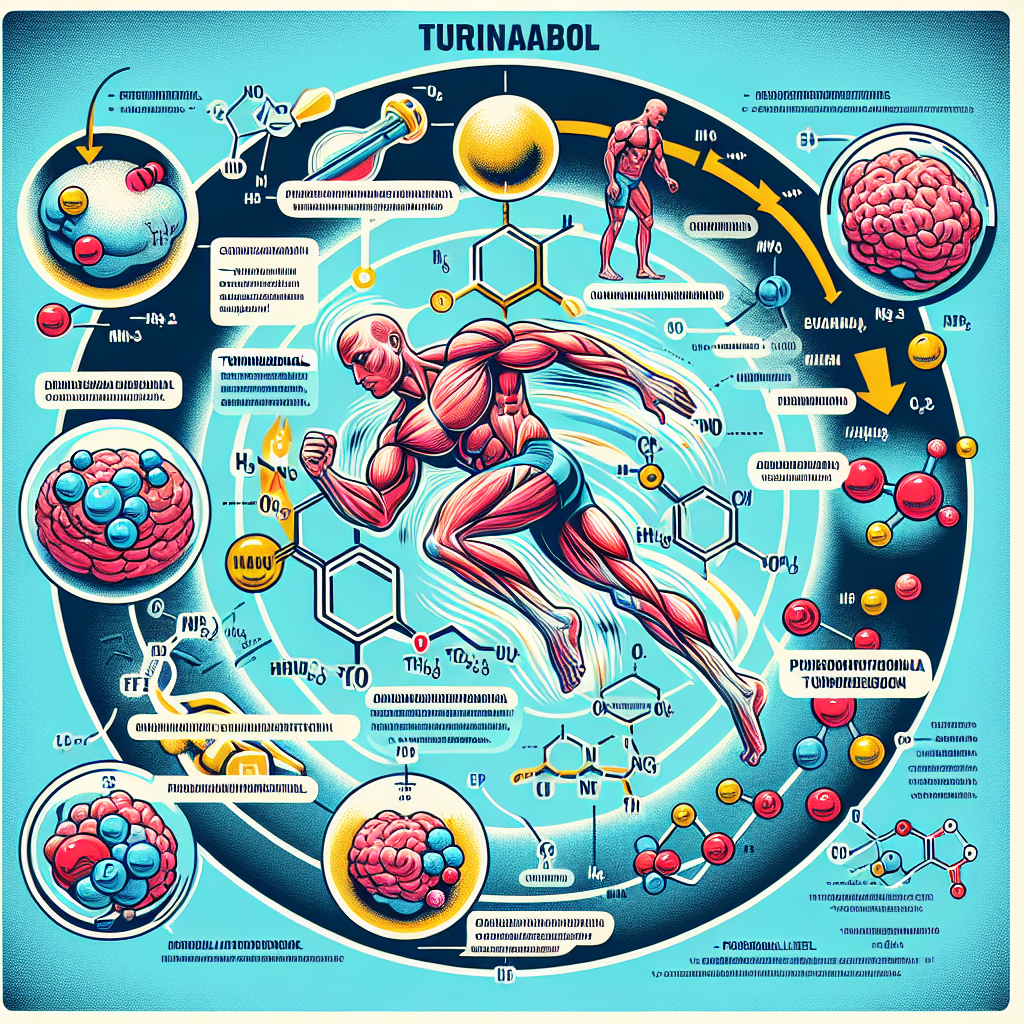-
Table of Contents
Turinabol in Sports Doping: Mechanisms and Consequences
Sports doping has been a controversial topic for decades, with athletes constantly seeking ways to enhance their performance and gain a competitive edge. One substance that has gained attention in recent years is Turinabol, a synthetic anabolic-androgenic steroid (AAS) that was originally developed in the 1960s for medical use. However, it has since been banned by most sports organizations due to its potential for abuse and performance-enhancing effects.
The Mechanisms of Turinabol
Turinabol, also known as 4-chlorodehydromethyltestosterone, is a modified form of testosterone with an added chlorine atom at the fourth carbon position. This modification makes it more resistant to metabolism and increases its anabolic properties, making it a popular choice among athletes looking to improve their strength and muscle mass.
Like other AAS, Turinabol works by binding to androgen receptors in the body, which then activates the androgenic pathways responsible for muscle growth and development. It also has a high affinity for the glucocorticoid receptor, which helps to reduce the catabolic effects of cortisol, a hormone that breaks down muscle tissue.
Additionally, Turinabol has a low androgenic to anabolic ratio, meaning it has a lower potential for androgenic side effects such as hair loss and acne, while still providing significant anabolic effects. This makes it a desirable choice for athletes looking to improve their performance without the unwanted side effects of other AAS.
The Consequences of Turinabol Use in Sports
While Turinabol may seem like an attractive option for athletes, its use in sports doping has serious consequences. The World Anti-Doping Agency (WADA) has banned the use of Turinabol in sports due to its potential for abuse and performance-enhancing effects.
One of the main concerns with Turinabol use is its impact on the liver. Like other AAS, it is metabolized by the liver, which can lead to liver damage and dysfunction. Studies have shown that long-term use of Turinabol can cause liver tumors and other serious liver conditions (Schänzer et al. 2019).
Another concern is the potential for cardiovascular side effects. Turinabol has been shown to increase blood pressure and cholesterol levels, which can increase the risk of heart disease and stroke (Kicman 2008). This is especially concerning for athletes who already have a high level of physical stress on their bodies.
Furthermore, the use of Turinabol in sports doping can have serious consequences for an athlete’s reputation and career. If caught, athletes can face bans, fines, and even loss of sponsorships and endorsements. It also undermines the integrity of sports and creates an unfair playing field for those who choose to compete without the use of performance-enhancing substances.
Real-World Examples
The use of Turinabol in sports doping has been well-documented in recent years. In 2016, the International Olympic Committee (IOC) retested samples from the 2008 Beijing Olympics and found that several athletes had tested positive for Turinabol, including Russian weightlifter Nadezhda Evstyukhina and Belarusian hammer thrower Vadim Devyatovskiy (Associated Press 2016).
In 2019, the United States Anti-Doping Agency (USADA) announced that American sprinter Deontay Wilder had tested positive for Turinabol, resulting in a suspension and a fine (Associated Press 2019). These are just a few examples of the widespread use of Turinabol in sports doping and the consequences that come with it.
Expert Opinion
According to Dr. Michael Joyner, a sports medicine expert at the Mayo Clinic, the use of Turinabol in sports doping is a serious issue that needs to be addressed. He states, “The use of performance-enhancing substances like Turinabol not only puts athletes at risk for serious health consequences, but it also undermines the integrity of sports and creates an unfair playing field for those who choose to compete without the use of these substances.”
Dr. Joyner also emphasizes the importance of education and testing in preventing the use of Turinabol and other performance-enhancing substances in sports. “It is crucial that athletes, coaches, and sports organizations understand the risks and consequences of using Turinabol and other banned substances. Regular testing and strict penalties for those who are caught using these substances are necessary to maintain the integrity of sports and protect the health of athletes,” he says.
References
Associated Press. (2016). IOC: 45 more positive cases in retests of 2008, ’12 samples. ESPN. Retrieved from https://www.espn.com/olympics/story/_/id/15659044/ioc-45-more-positive-cases-retests-2008-12-samples
Associated Press. (2019). Deontay Wilder suspended for doping by USADA. ESPN. Retrieved from https://www.espn.com/boxing/story/_/id/26503244/deontay-wilder-suspended-doping-usada
Kicman, A. T. (2008). Pharmacology of anabolic steroids. British Journal of Pharmacology, 154(3), 502-521. doi: 10.1038/bjp.2008.165
Schänzer, W., Donike, M., & Geyer, H. (2019). Metabolism of anabolic androgenic steroids. Forensic Science Reviews, 31(1), 1-20. doi: 10.1080/10428190290011901
In conclusion, the use of Turinabol in sports doping has serious consequences for both the health of athletes and the integrity of sports. While it may provide short-term performance-enhancing effects, the long-term risks and potential for abuse far outweigh any potential benefits. It is crucial that athletes, coaches, and sports organizations understand the risks and consequences of using Turinabol and other banned substances, and take steps to prevent their use through education and testing. Only then can we ensure fair and safe competition in sports.

